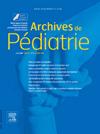青少年拇指外翻:三种截骨术与术后中期效果的比较。
IF 1.3
4区 医学
Q3 PEDIATRICS
引用次数: 0
摘要
背景:关于幼年拇指外翻(JHV)的治疗方法,目前还没有达成共识。已有许多手术方法被描述过,但没有一种方法被证明具有优越性,而且这些方法的中期效果也不甚了解。我们的目的是比较三种跖骨截骨术的中期临床、影像学和功能效果:这项多中心回顾性研究纳入了 2010 年 1 月至 2019 年 12 月间因 JHV 而接受手术的 18 岁以下患者。非特发性拇指外翻或术后随访少于3年的患者被排除在外。采用的手术技术为跖骨截骨术:基底跖骨截骨术、巾状截骨术或远端截骨术。在随访期间,我们收集了HMIS-AOFAS(Hallux Metatarsophalangeal Interphalangeal Scale American Orthopedic Foot and Ankle Society)和视觉模拟量表(Visual Analogue Scale, VAS)评分,获取了X光片,并记录了并发症和复发情况。其次,根据椎体状态(开放式与闭合式)对研究对象进行分层:研究期间,18 名患者(26 英尺)符合纳入标准。术后随访的中位数为 6.5 (4.1) 年。随访结束时,HMIS评分的中位数为79.0(20.0)分,平均外翻角度(HVA)改善了13.2°(16.8),并发症发生率和复发率分别为31%和23%。三种技术的疗效无明显差异,手术时的髋关节状态也无差异:讨论和结论:无论截骨部位如何,跖骨截骨术的中期功能和影像学效果都很好。我们的结果与文献发表的结果相当。由于我们的样本量有限,因此无法确定统计学上的显著差异。本文章由计算机程序翻译,如有差异,请以英文原文为准。
Juvenile hallux valgus: Comparison of three types of osteotomy and medium-term postoperative results
Background
There is no consensus on the treatment of juvenile hallux valgus (JHV). Numerous surgical techniques have been described, none of which has been proven to be superior and the mid-term results of these methods are not well known. Our objective was to compare the mid-term clinical, radiographic, and functional results of three metatarsal osteotomy techniques.
Methods
Patients under 18 years of age operated on for JHV between January 2010 and December 2019 were included in this multicenter retrospective study. Patients were excluded if they had non-idiopathic hallux valgus or if their postoperative follow-up was less than 3 years. The surgical techniques used were metatarsal osteotomies: basimetatarsal, scarf, or distal. During follow-up visits, we collected HMIS-AOFAS (Hallux Metatarsophalangeal Interphalangeal Scale–American Orthopedic Foot and Ankle Society) and Visual Analogue Scale (VAS) scores, acquired radiographs, and recorded complications and recurrences. Secondarily, the study population was stratified according to physis status (open vs. closed).
Results
During the study period, 18 patients (26 feet) met the inclusion criteria. The median postoperative follow-up was 6.5 (4.1) years. At the end of follow-up, the median HMIS score was 79.0 (20.0), the mean hallux valgus angle (HVA) improvement was 13.2° (16.8), and the complication and recurrence rates were 31 % and 23 %, respectively. There was no significant difference in the outcome measures between the three techniques or any difference according to physis status at the time of surgery.
Discussion and conclusion
The functional and radiographic results of metatarsal osteotomies are good in the medium term, regardless of the osteotomy site. Our results are comparable to those published in the literature. As our sample size was limited, it did not lead to the identification of statistically significant differences.
求助全文
通过发布文献求助,成功后即可免费获取论文全文。
去求助
来源期刊

Archives De Pediatrie
医学-小儿科
CiteScore
2.80
自引率
5.60%
发文量
106
审稿时长
24.1 weeks
期刊介绍:
Archives de Pédiatrie publishes in English original Research papers, Review articles, Short communications, Practice guidelines, Editorials and Letters in all fields relevant to pediatrics.
Eight issues of Archives de Pédiatrie are released annually, as well as supplementary and special editions to complete these regular issues.
All manuscripts submitted to the journal are subjected to peer review by international experts, and must:
Be written in excellent English, clear and easy to understand, precise and concise;
Bring new, interesting, valid information - and improve clinical care or guide future research;
Be solely the work of the author(s) stated;
Not have been previously published elsewhere and not be under consideration by another journal;
Be in accordance with the journal''s Guide for Authors'' instructions: manuscripts that fail to comply with these rules may be returned to the authors without being reviewed.
Under no circumstances does the journal guarantee publication before the editorial board makes its final decision.
Archives de Pédiatrie is the official publication of the French Society of Pediatrics.
 求助内容:
求助内容: 应助结果提醒方式:
应助结果提醒方式:


